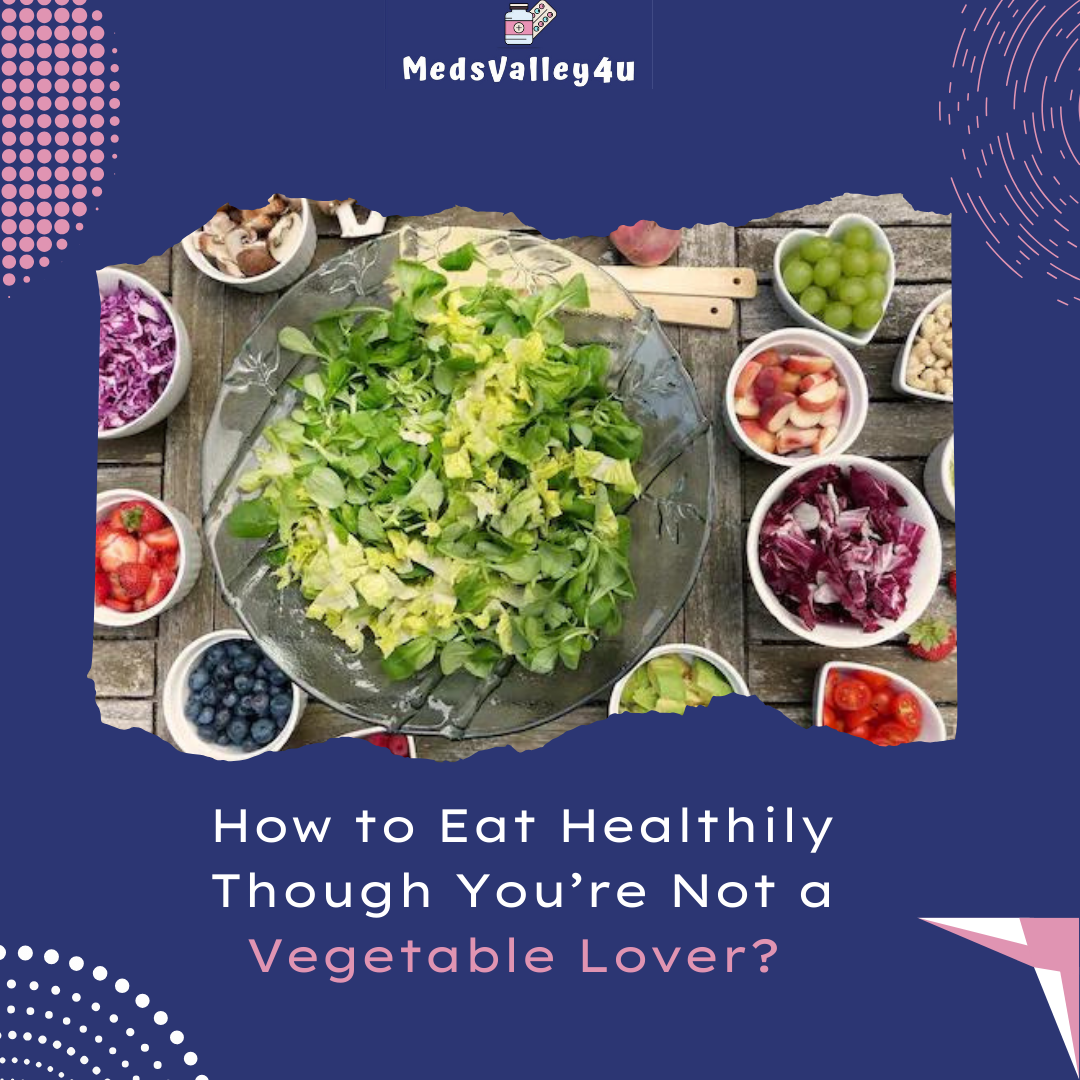How to Eat Healthily Even if You’re Not a Vegetable Lover
Eating a healthy diet is often associated with consuming a variety of vegetables, but what if you’re not particularly fond of them? While vegetables are a crucial component of a balanced diet due to their vitamins, minerals, fiber, and antioxidants, there are strategies to help you maintain a nutritious diet even if you’re not a vegetable enthusiast. Here’s how you can eat healthily while working around your aversion to vegetables.
Understanding the Importance of Vegetables
Vegetables are packed with essential nutrients that support overall health. They are rich in vitamins (such as vitamins A, C, and K), minerals (including potassium and magnesium), and fiber, which aids in digestion and helps maintain healthy cholesterol levels. Additionally, the antioxidants found in vegetables help combat oxidative stress and inflammation, reducing the risk of chronic diseases.
However, if you find it challenging to include vegetables in your diet, it’s important to understand that there are alternative ways to meet your nutritional needs and maintain a balanced diet.
Strategies to Incorporate Vegetables More Enjoyably
- Start with Mild Flavors: If you’re new to incorporating vegetables into your diet, begin with milder-tasting options. Vegetables like carrots, bell peppers, and cucumbers have a more neutral taste and are easier to incorporate into various dishes. Gradually experimenting with these milder options can help you become more accustomed to vegetables.
- Blend Vegetables into Smoothies: Smoothies are a great way to include vegetables in your diet without their strong flavors being a dominant factor. Blend leafy greens like spinach or kale with fruits such as bananas, berries, and apples. The sweetness of the fruit often masks the taste of the greens, making them more palatable.
- Try Different Cooking Methods: The way vegetables are prepared can significantly affect their taste and texture. Roasting, grilling, or sautéing vegetables can enhance their flavor and make them more enjoyable. For example, roasting Brussels sprouts or sweet potatoes caramelizes their natural sugars, giving them a sweeter, more appealing taste.
- Use Vegetables in Sauces and Soups: Incorporate vegetables into sauces, soups, and stews where their flavors can blend with other ingredients. For instance, you can add finely chopped carrots, celery, or spinach to a marinara sauce or blend them into a creamy soup. This method allows you to benefit from the nutrients without feeling overwhelmed by the vegetable taste.
- Add Vegetables to Dishes You Enjoy: Find ways to incorporate vegetables into your favorite dishes. For example, add shredded carrots or chopped spinach to meatloaf, pasta sauces, or scrambled eggs. This approach helps you get used to the texture and taste of vegetables while enjoying familiar flavors.
Alternative Nutrient-Dense Foods
If you’re not a fan of vegetables, you can still ensure you’re getting essential nutrients through other foods:
- Fruits: Fruits are a fantastic source of vitamins, minerals, and antioxidants. While they may not provide the same fiber content as vegetables, they offer similar health benefits. Incorporate a variety of fruits into your diet, such as berries, apples, oranges, and bananas. They can also be used in smoothies, salads, and desserts.
- Whole Grains: Whole grains like quinoa, brown rice, barley, and oats are rich in fiber, B vitamins, and minerals. They help support digestive health and provide a steady source of energy. Choose whole grains over refined grains to maximize nutrient intake.
- Nuts and Seeds: Nuts and seeds are nutrient-dense foods that provide healthy fats, protein, vitamins, and minerals. Include options such as almonds, walnuts, chia seeds, and flaxseeds in your diet. They can be added to yogurt, salads, or enjoyed as a snack.
- Legumes: Beans, lentils, and chickpeas are excellent sources of protein, fiber, and essential nutrients. They can be used in various dishes, from soups and stews to salads and veggie burgers. Legumes offer a great way to get plant-based protein and fiber without relying on vegetables.
- Lean Proteins: Incorporate lean proteins like chicken, turkey, fish, and tofu into your diet. These foods provide essential amino acids, vitamins, and minerals while helping to maintain muscle mass and support overall health.
Creative Ways to Increase Vegetable Intake
- Incorporate Vegetables into Snacks: If you struggle to eat vegetables as part of your main meals, try incorporating them into your snacks. For example, dip raw veggies like bell peppers, cucumbers, or cherry tomatoes in hummus or yogurt-based dips. You can also make vegetable-based chips or add vegetables to savory snacks like rice cakes.
- Experiment with Vegetable-Based Alternatives: Explore vegetable-based alternatives for traditional dishes. For example, use spiralized zucchini or sweet potato noodles as a substitute for pasta. Cauliflower can be used to make a low-carb pizza crust or mashed as a healthier alternative to mashed potatoes.
- Try Vegetable-Based Beverages: If you’re not keen on eating vegetables, consider trying vegetable-based beverages. For example, vegetable juices or broths can provide nutrients in a more palatable form. Be mindful of added sugars or sodium in store-bought options and consider making your own at home.
- Add Vegetables to Baked Goods: Incorporate vegetables into baked goods such as muffins, bread, or brownies. For instance, grated carrots or zucchini can be added to muffins, and pumpkin puree can be used in brownies. These additions boost the nutritional content of your baked goods without overpowering the flavor.
Addressing Nutritional Concerns
- Consider a Multivitamin: If you’re concerned about missing out on essential nutrients due to limited vegetable intake, consider taking a multivitamin. While it’s best to get nutrients from whole foods, a high-quality multivitamin can help fill any gaps in your diet.
- Consult with a Nutritionist: If you have specific dietary needs or health concerns, consulting with a registered dietitian or nutritionist can provide personalized guidance. They can help you develop a balanced meal plan that meets your nutritional needs while accommodating your food preferences.
Conclusion
Eating healthily without being a vegetable lover is entirely feasible by employing creative strategies and focusing on nutrient-dense alternatives. By incorporating milder-tasting vegetables, experimenting with different cooking methods, and utilizing fruits, whole grains, legumes, and lean proteins, you can maintain a balanced and nutritious diet. Additionally, addressing nutritional concerns with supplements or professional advice ensures that you meet your dietary needs effectively. Embracing these strategies can help you enjoy a varied and healthful diet, even if vegetables aren’t your favorite.







Write a comment
Your email address will not be published. All fields are required